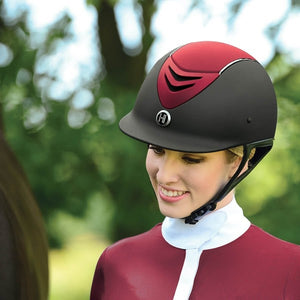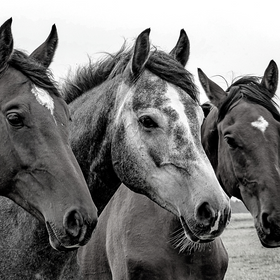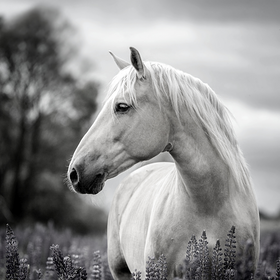
What is a course walk and how does it help you ride a clear round?
In riding and in life, the key to success is preparation (and practice). A great way to prepare for the jumper ring or a cross-country course is to walk it before riding it. Course walks give you a closer look at the course and allow you to plan your strategy before getting into the saddle. Most horse show schedules provide a specific time before the class starts for riders to walk the course. Here are some things you should keep in mind as you are doing your course walk.
If your riding instructor is available, walk the course with them. They are familiar with your riding ability, habits, and your horse and can flag potential challenges in the course and provide guidance. When your riding instructor is not with you, consider doing your course walk with another rider and discuss the challenges.
Learn the Course
Before you walk the course, take a photo of the posted course. This will help orient you as you begin your walking and help you remember the course. If you struggle with remembering the course, remember repetition is key. Walk the course multiple times and visualize your approach to the jumps.
Every course will have challenges designed for the height and level of the class. As you walk the course, take note of these challenges and strategize your approach. Depending on the level, courses can include navigating complicated tracks, half-strides between two related fences, and spooky jumps.
While some riders will opt not to walk the course, it is best not to leave things to chance. Walking the course gives you time to prepare and know what is ahead so you can plan for success.
Course Walk
As you walk the course, plan your track to each fence and pace out the distance between fences. Also, consider a backup plan for each fence if things don’t go quite as planned. Watch for anything that might be challenging or spooky for you or your horse. Make a note and be aware, but don’t overthink these items. Over-anticipating problems can lead to other issues.
To pace the distance between jumps, make sure your step is about three feet. Courses are usually set for a horse’s 12-foot stride, allowing for six feet for take-off and six feet for landing. If you walk two steps for take-off, you are measuring about six feet. The type of fence and height will also play a role in the distance between jumps. As the jumps increase in height, the margin for error will get smaller and smaller.
Also, take note of where the start and finish timers are. You don’t want to ride a clean round and get disqualified on time because you didn’t know where they were placed.
Watch other riders as they walk and ride the course. You can learn from their errors or notice something you missed on your course walk. This trick has the added advantage of helping you learn the course pattern.
We hope our guide helps you take on your next course with confidence!





